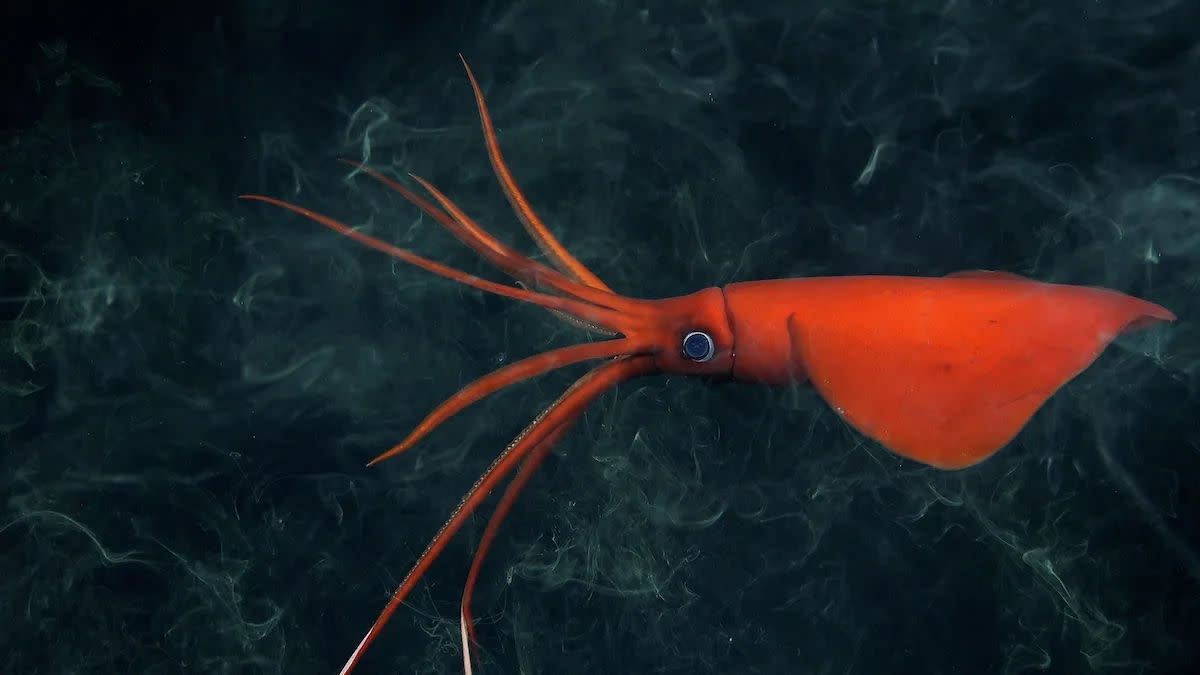A Ship Sailed to the End of the Earth—and Discovered 100 New Life Forms

From January 8 to February 11, the research vehicle Falkor (too), belonging to the Schmidt Ocean Institute, mapped 20,400 square miles of of the southeast Pacific and discovered around 100 new marine species in the process.
These species include squat lobsters, glass sponges, sea urchins, amphipods, and more.
During the expedition, researchers also cataloged four undiscovered seamounts—one of which that was more than two miles tall.
The deep ocean and outer space share are more alike than one might initially think—humans don’t know much about them, and they’re brutally inhospitable to animals of the primate variety. Try to explore space without the proper protection, and breathing becomes a problem. Of course, ditto in the ocean, but for different reasons.
While these extreme locales share dangerous similarities, they also each contain a wellspring of science waiting to be discovered. While billion-dollar instruments like the James Webb Space Telescope tell us new things about our universe, oceanic expeditions like the Schmidt Ocean Institute’s (SOI) “Seamounts of the Southeast Pacific” similarly rewrite the story that we think we know about our oceans.
During a month-long expedition, which stretched from January 8 to the February 11, SOI’s Falkor (too) research vehicle explored three major areas of the southeast Pacific. After mapping some 20,400 square miles of ocean, the team—led by Javier Sellanes, a biologist at Chile’s Catholic University of the North—estimated that more than 100 new marine species had been discovered.
One of the expedition’s main targets was the Nazca and Salas y Gómez ridges, which contain a chain of 200 seamounts (a.k.a. underwater mountains) that stretch some 1,800 miles from Chile to Rapa Nui (Easter Island). The expedition also poked around the Juan Fernández and Nazca-Desventuradas marine parks, and while those parks have protections, the incredible biodiversity found at the Nazca and Salas y Gómez ridges could help earn this stretch of ocean marine protections.
The Falkor (too) is essentially a floating scientific research center with multiple labs, acoustic sensors, multibeam echosounder arrays, and most importantly, an underwater robot capable of descending some 2.5 miles below the surface. While investigating 10 seamounts, scientists discovered that each contained unique ecosystems from “deep-sea coral reefs to sponge gardens,” according to the SOI’s press release. With these ecosystems, scientists found new species of squat lobsters, glass sponges, sea urchins, amphipods, and more.
“You always expect to find new species in these remote and poorly explored areas, but the amount we found, especially for some groups like sponges, is mind-blowing,” Sellanes said in the press statement. “These thriving and healthy ecosystems indicate that the Nazca-Desventuradas and Juan Fernández Marine Parks effectively protect delicate marine habitats.”
Animals weren’t the only thing on the list of Falkor (too)’s achievements for this expedition. The vessel also stumbled upon four previously undiscovered seamounts, including one that stands more than two miles tall. The seamount was named “Solito,” meaning “alone” in Spanish.
Falkor (too) will go on a second expedition starting February 24, and if the previous one is any indication, who knows what they’ll discover.
You Might Also Like

